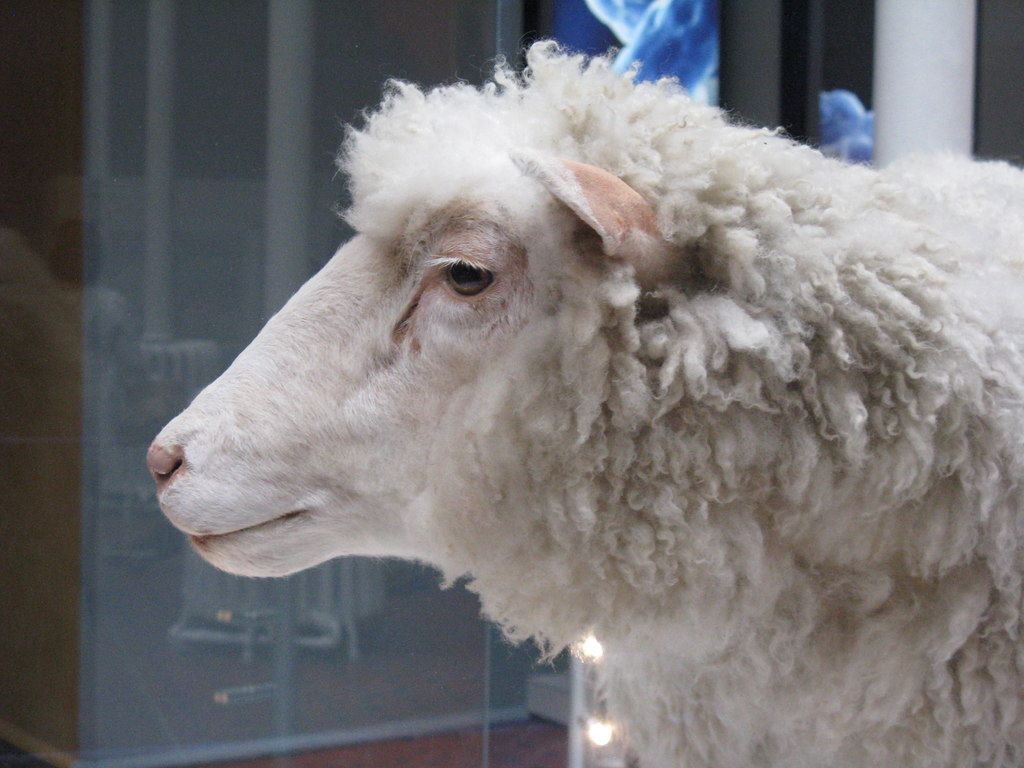Summary | Excerpt | Reviews | Beyond the Book | Read-Alikes | Genres & Themes | Author Bio

This article relates to The Echo Wife
 One of author Sarah Gailey's greatest skills on display in The Echo Wife is that of making the science depicted look and feel real. The cloning in the novel seems plausible. But how far have humans actually come in the field of cloning? Where did it begin and where are we now?
One of author Sarah Gailey's greatest skills on display in The Echo Wife is that of making the science depicted look and feel real. The cloning in the novel seems plausible. But how far have humans actually come in the field of cloning? Where did it begin and where are we now?
First, we should establish what cloning is. As Dr. Helen Klus puts it on her blog The Star Garden, cloning is a method of artificially creating "genetically identical individuals." Klus grounds cloning in a natural mindset by reminding us that identical reproduction happens all the time in nature. Asexual reproduction is the main method of reproduction for single-celled organisms, in addition to numerous plants and fungi.
In that sense, cloning has been going on in nature for far, far longer than humans have existed. In the world of artificial cloning, however, the first step took place in the late 19th century, when German biologist Hans Driesch began work that resulted in the ability to clone sea urchins. This was done through a process like the one involved in the development of identical twins, by splitting cells in a developing embryo. In 1928, through experiments with salamanders, German embryologist Hans Spemann and his assistant Hilde Mangold discovered that the information necessary for cloning lay in the nucleus of a cell.
Eventually, scientists began to perform somatic cell transfers, starting with British biologist John Gurdon, who used this process in 1958 to clone a frog. A somatic cell transfer creates an embryo from a somatic (that is, taken from the body) cell and an egg cell. As Dr. Klus explains it, "the nucleus of a somatic cell is taken from the animal you want to clone. It's then placed in the egg cell of another animal, which has had its nucleus removed. This egg then contains a nucleus with two sets of chromosomes, the same as a fertilised egg, and they are all identical to the animal you took them from."
This process led to a breakthrough in artificial cloning in 1996: Dolly the sheep. Dolly was cloned using an udder cell taken from an adult sheep. Since then, according to National Geographic, scientists have successfully cloned "cows, cats, deer, horses, and rabbits."
Currently, it is difficult to produce a clone that survives because there are many technical challenges that can prevent the process from going smoothly. In fact, Dolly's cloning took 276 attempts to get right. In 2008, Samuel Wood, an American scientist, attempted to make a clone using his own skin cells implanted in a donated human egg, with the objective of developing viable embryonic stem cells; five embryos did develop, but it is not clear if they would have been capable of further development as Dr. Wood destroyed them, stating that using the technology for reproductive cloning would be both unethical and illegal. In 2011, biologists Dieter Egli and Scott Noggle of the New York Stem Cell Foundation Laboratory were the first to clone human embryonic stem cells. However, this only worked with the egg's nucleus remaining in the cell, which left the egg with too many sets of chromosomes to be usable in growing tissues for transplantation.
Putting aside the technical challenges, there are many legal and moral obstacles to any aspect of human cloning that scientists, ethicists and societies as a whole will be grappling with for a long time to come.
Portrait of Dolly the sheep (taxidermied) in the National Museum of Scotland. Photo by M J Richardson (CC BY-SA 2.0)
Filed under Medicine, Science and Tech
![]() This "beyond the book article" relates to The Echo Wife. It originally ran in March 2021 and has been updated for the
May 2022 paperback edition.
Go to magazine.
This "beyond the book article" relates to The Echo Wife. It originally ran in March 2021 and has been updated for the
May 2022 paperback edition.
Go to magazine.
Your guide toexceptional books
BookBrowse seeks out and recommends the best in contemporary fiction and nonfiction—books that not only engage and entertain but also deepen our understanding of ourselves and the world around us.